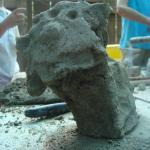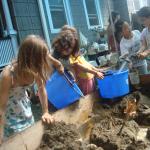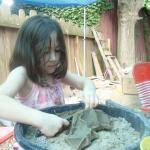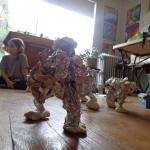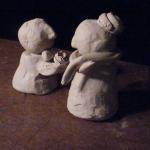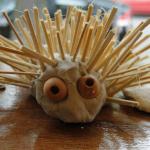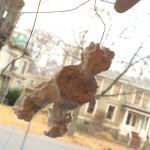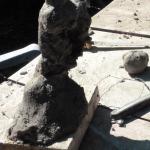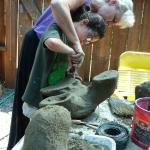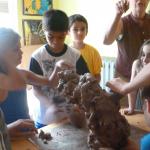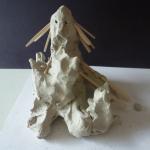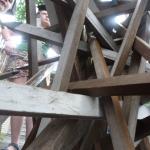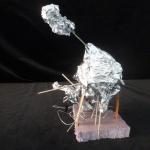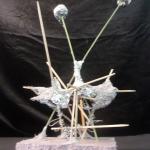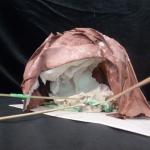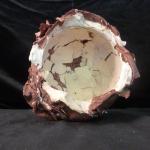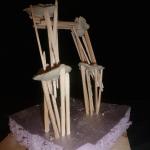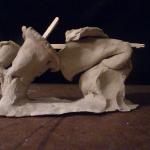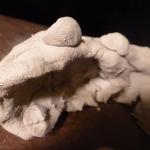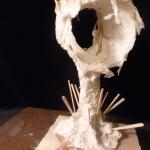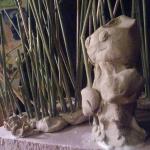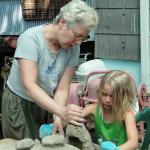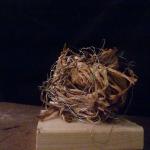Sculpture for students at Abovoagogo takes many different forms. For several years, in the warm weather I was teaching carving and casting, using concrete in the sand beds that I use for my own casting work (see Industry Gallery). For the students, you see a process where scultures are formed by digging a negative shape in compact sand. The wet concrete is then poured into the hole, forming a positive object of the negative shape. These objects are sometimes the starting point for carving. Concrete, when it is newly set is very easily carved, using simple knives and files. You see in these pictures that children are learning how to handle knives. This is an accessible medium for kids to learn both casting and reductive methods. You may recognize the basis of some of these sculptures as generating from the forms of packaging. Concrete is also used for molding and modeling, using a formula combined with clay and built over wire armatures.
In the studio the scale of sculpture changes, along with the mediums, becoming more narrative, about the relationship of objects and the nature of materials such as clay, wire, wood, mache, styrofoam, paper, glue, foil and so on. Physical things have meaning outside of their function. How is it that we understand this? Can we recognize the things we know innately about objects? Can we express ourselves with sculpture?


